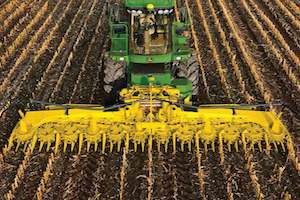Stalk rot has been a point of discussion among many corn producers across Nebraska. Now, experts from the University of Nebraska-Lincoln are providing insight into how they can prioritize their harvest this coming season.
When plants are stressed and the leaf area is reduced by disease, drought, or even mechanical damage, they may begin to cannibalize carbohydrates from their stalks, causing them to weaken. This, in turn, results in breakage during the harvesting process, and ultimately yield loss for producers. Experts note that it is critical to scout fields to determine which ones should be harvested before the rest. This can potentially reduce the amount of loss due to lodged corn or stalk rot.
A “push” or “pinch” test can be used to determine the abundance of stalk rot within a particular field. Producers can conduct the “push” test by randomly selecting 100 plants and pushing the plant tops away from them approximately 30 degrees from vertical. Alternatively, the “pinch” test can be used to squeeze the internodes of the lower stock between the thumb and first finger.
If a plant does not snap back to a vertical position when released, or the stalk is crushed when pinched, it may indicate stalk rot disease. If more than 10% of plants show symptoms of the condition, producers should harvest affected fields to reduce the chance of plants lodging prior to harvest.
